Lama Alkhaled
Fairness and Bias in Multimodal AI: A Survey
Jun 27, 2024Abstract:The importance of addressing fairness and bias in artificial intelligence (AI) systems cannot be over-emphasized. Mainstream media has been awashed with news of incidents around stereotypes and bias in many of these systems in recent years. In this survey, we fill a gap with regards to the minimal study of fairness and bias in Large Multimodal Models (LMMs) compared to Large Language Models (LLMs), providing 50 examples of datasets and models along with the challenges affecting them; we identify a new category of quantifying bias (preuse), in addition to the two well-known ones in the literature: intrinsic and extrinsic; we critically discuss the various ways researchers are addressing these challenges. Our method involved two slightly different search queries on Google Scholar, which revealed that 33,400 and 538,000 links are the results for the terms "Fairness and bias in Large Multimodal Models" and "Fairness and bias in Large Language Models", respectively. We believe this work contributes to filling this gap and providing insight to researchers and other stakeholders on ways to address the challenge of fairness and bias in multimodal A!.
Data Bias According to Bipol: Men are Naturally Right and It is the Role of Women to Follow Their Lead
Apr 07, 2024



Abstract:We introduce new large labeled datasets on bias in 3 languages and show in experiments that bias exists in all 10 datasets of 5 languages evaluated, including benchmark datasets on the English GLUE/SuperGLUE leaderboards. The 3 new languages give a total of almost 6 million labeled samples and we benchmark on these datasets using SotA multilingual pretrained models: mT5 and mBERT. The challenge of social bias, based on prejudice, is ubiquitous, as recent events with AI and large language models (LLMs) have shown. Motivated by this challenge, we set out to estimate bias in multiple datasets. We compare some recent bias metrics and use bipol, which has explainability in the metric. We also confirm the unverified assumption that bias exists in toxic comments by randomly sampling 200 samples from a toxic dataset population using the confidence level of 95% and error margin of 7%. Thirty gold samples were randomly distributed in the 200 samples to secure the quality of the annotation. Our findings confirm that many of the datasets have male bias (prejudice against women), besides other types of bias. We publicly release our new datasets, lexica, models, and codes.
On the Limitations of Large Language Models : False Attribution
Apr 06, 2024



Abstract:In this work, we provide insight into one important limitation of large language models (LLMs), i.e. false attribution, and introduce a new hallucination metric - Simple Hallucination Index (SHI). The task of automatic author attribution for relatively small chunks of text is an important NLP task but can be challenging. We empirically evaluate the power of 3 open SotA LLMs in zero-shot setting (LLaMA-2-13B, Mixtral 8x7B, and Gemma-7B), especially as human annotation can be costly. We collected the top 10 most popular books, according to Project Gutenberg, divided each one into equal chunks of 400 words, and asked each LLM to predict the author. We then randomly sampled 162 chunks for human evaluation from each of the annotated books, based on the error margin of 7% and a confidence level of 95% for the book with the most chunks (Great Expectations by Charles Dickens, having 922 chunks). The average results show that Mixtral 8x7B has the highest prediction accuracy, the lowest SHI, and a Pearson's correlation (r) of 0.737, 0.249, and -0.9996, respectively, followed by LLaMA-2-13B and Gemma-7B. However, Mixtral 8x7B suffers from high hallucinations for 3 books, rising as high as an SHI of 0.87 (in the range 0-1, where 1 is the worst). The strong negative correlation of accuracy and SHI, given by r, demonstrates the fidelity of the new hallucination metric, which is generalizable to other tasks. We publicly release the annotated chunks of data and our codes to aid the reproducibility and evaluation of other models.
Vehicle Detection Performance in Nordic Region
Mar 22, 2024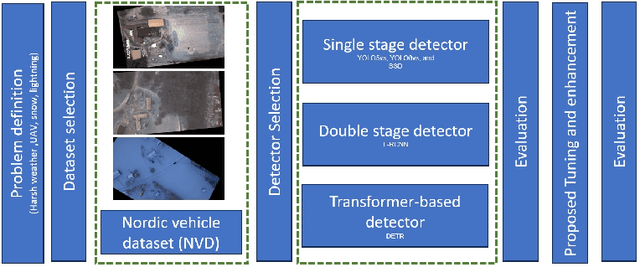
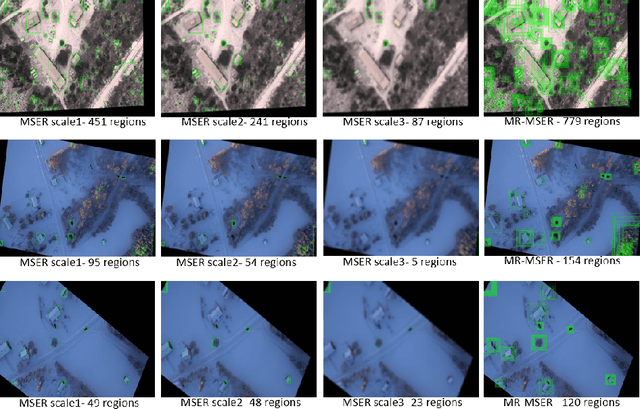

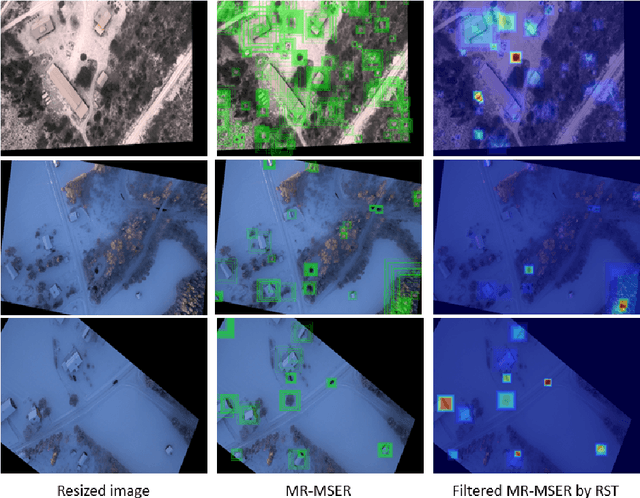
Abstract:This paper addresses the critical challenge of vehicle detection in the harsh winter conditions in the Nordic regions, characterized by heavy snowfall, reduced visibility, and low lighting. Due to their susceptibility to environmental distortions and occlusions, traditional vehicle detection methods have struggled in these adverse conditions. The advanced proposed deep learning architectures brought promise, yet the unique difficulties of detecting vehicles in Nordic winters remain inadequately addressed. This study uses the Nordic Vehicle Dataset (NVD), which has UAV images from northern Sweden, to evaluate the performance of state-of-the-art vehicle detection algorithms under challenging weather conditions. Our methodology includes a comprehensive evaluation of single-stage, two-stage, and transformer-based detectors against the NVD. We propose a series of enhancements tailored to each detection framework, including data augmentation, hyperparameter tuning, transfer learning, and novel strategies designed explicitly for the DETR model. Our findings not only highlight the limitations of current detection systems in the Nordic environment but also offer promising directions for enhancing these algorithms for improved robustness and accuracy in vehicle detection amidst the complexities of winter landscapes. The code and the dataset are available at https://nvd.ltu-ai.dev
Instruction Makes a Difference
Feb 01, 2024Abstract:We introduce Instruction Document Visual Question Answering (iDocVQA) dataset and Large Language Document (LLaDoc) model, for training Language-Vision (LV) models for document analysis and predictions on document images, respectively. Usually, deep neural networks for the DocVQA task are trained on datasets lacking instructions. We show that using instruction-following datasets improves performance. We compare performance across document-related datasets using the recent state-of-the-art (SotA) Large Language and Vision Assistant (LLaVA)1.5 as the base model. We also evaluate the performance of the derived models for object hallucination using the Polling-based Object Probing Evaluation (POPE) dataset. The results show that instruction-tuning performance ranges from 11X to 32X of zero-shot performance and from 0.1% to 4.2% over non-instruction (traditional task) finetuning. Despite the gains, these still fall short of human performance (94.36%), implying there's much room for improvement.
ProCoT: Stimulating Critical Thinking and Writing of Students through Engagement with Large Language Models (LLMs)
Dec 15, 2023Abstract:We introduce a novel writing method called Probing Chain of Thought (ProCoT), which prevents students from cheating using a Large Language Model (LLM), such as ChatGPT, while enhancing their active learning through such models. LLMs have disrupted education and many other feilds. For fear of students cheating, many educationists have resorted to banning their use, as their outputs can be human-like and hard to detect in some cases. These LLMs are also known for hallucinations (i.e. fake facts). We conduct studies with ProCoT in two different courses with a combined total of about 66 students. The students in each course were asked to prompt an LLM of their choice with one question from a set of four and required to affirm or refute statements in the LLM output by using peer reviewed references. The results show two things: (1) ProCoT stimulates creative/critical thinking and writing of students through engagement with LLMs when we compare the LLM solely output to ProCoT output and (2) ProCoT can prevent cheating because of clear limitations in existing LLMs when we compare students ProCoT output to LLM ProCoT output. We also discover that most students prefer to give answers in fewer words than LLMs, which are typically verbose. The average word counts for students, ChatGPT (v3.5) and Phind (v8) are 208, 391 and 383, respectively.
AfriMTE and AfriCOMET: Empowering COMET to Embrace Under-resourced African Languages
Nov 16, 2023
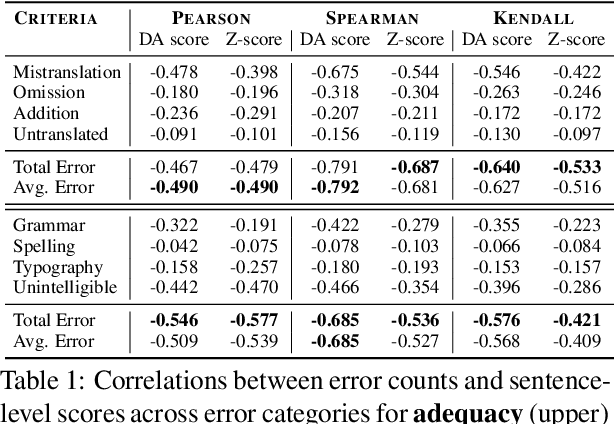
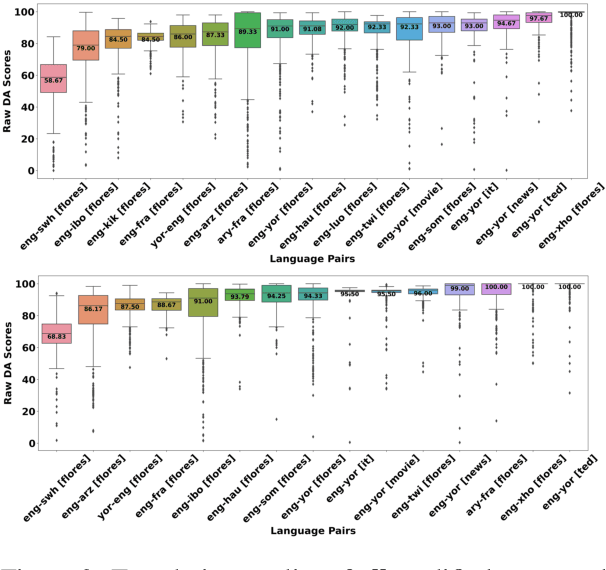
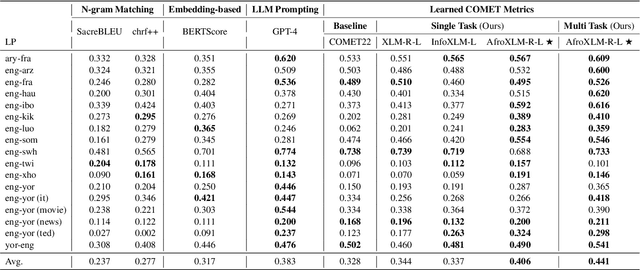
Abstract:Despite the progress we have recorded in scaling multilingual machine translation (MT) models and evaluation data to several under-resourced African languages, it is difficult to measure accurately the progress we have made on these languages because evaluation is often performed on n-gram matching metrics like BLEU that often have worse correlation with human judgments. Embedding-based metrics such as COMET correlate better; however, lack of evaluation data with human ratings for under-resourced languages, complexity of annotation guidelines like Multidimensional Quality Metrics (MQM), and limited language coverage of multilingual encoders have hampered their applicability to African languages. In this paper, we address these challenges by creating high-quality human evaluation data with a simplified MQM guideline for error-span annotation and direct assessment (DA) scoring for 13 typologically diverse African languages. Furthermore, we develop AfriCOMET, a COMET evaluation metric for African languages by leveraging DA training data from high-resource languages and African-centric multilingual encoder (AfroXLM-Roberta) to create the state-of-the-art evaluation metric for African languages MT with respect to Spearman-rank correlation with human judgments (+0.406).
Robust and Fast Vehicle Detection using Augmented Confidence Map
Apr 27, 2023



Abstract:Vehicle detection in real-time scenarios is challenging because of the time constraints and the presence of multiple types of vehicles with different speeds, shapes, structures, etc. This paper presents a new method relied on generating a confidence map-for robust and faster vehicle detection. To reduce the adverse effect of different speeds, shapes, structures, and the presence of several vehicles in a single image, we introduce the concept of augmentation which highlights the region of interest containing the vehicles. The augmented map is generated by exploring the combination of multiresolution analysis and maximally stable extremal regions (MR-MSER). The output of MR-MSER is supplied to fast CNN to generate a confidence map, which results in candidate regions. Furthermore, unlike existing models that implement complicated models for vehicle detection, we explore the combination of a rough set and fuzzy-based models for robust vehicle detection. To show the effectiveness of the proposed method, we conduct experiments on our dataset captured by drones and on several vehicle detection benchmark datasets, namely, KITTI and UA-DETRAC. The results on our dataset and the benchmark datasets show that the proposed method outperforms the existing methods in terms of time efficiency and achieves a good detection rate.
Bipol: A Novel Multi-Axes Bias Evaluation Metric with Explainability for NLP
Apr 08, 2023



Abstract:We introduce bipol, a new metric with explainability, for estimating social bias in text data. Harmful bias is prevalent in many online sources of data that are used for training machine learning (ML) models. In a step to address this challenge we create a novel metric that involves a two-step process: corpus-level evaluation based on model classification and sentence-level evaluation based on (sensitive) term frequency (TF). After creating new models to detect bias along multiple axes using SotA architectures, we evaluate two popular NLP datasets (COPA and SQUAD). As additional contribution, we created a large dataset (with almost 2 million labelled samples) for training models in bias detection and make it publicly available. We also make public our codes.
Bipol: Multi-axes Evaluation of Bias with Explainability in Benchmark Datasets
Jan 28, 2023



Abstract:We evaluate five English NLP benchmark datasets (available on the superGLUE leaderboard) for bias, along multiple axes. The datasets are the following: Boolean Question (Boolq), CommitmentBank (CB), Winograd Schema Challenge (WSC), Winogender diagnostic (AXg), and Recognising Textual Entailment (RTE). Bias can be harmful and it is known to be common in data, which ML models learn from. In order to mitigate bias in data, it is crucial to be able to estimate it objectively. We use bipol, a novel multi-axes bias metric with explainability, to quantify and explain how much bias exists in these datasets. Multilingual, multi-axes bias evaluation is not very common. Hence, we also contribute a new, large labelled Swedish bias-detection dataset, with about 2 million samples; translated from the English version. In addition, we contribute new multi-axes lexica for bias detection in Swedish. We train a SotA model on the new dataset for bias detection. We make the codes, model, and new dataset publicly available.
 Add to Chrome
Add to Chrome Add to Firefox
Add to Firefox Add to Edge
Add to Edge